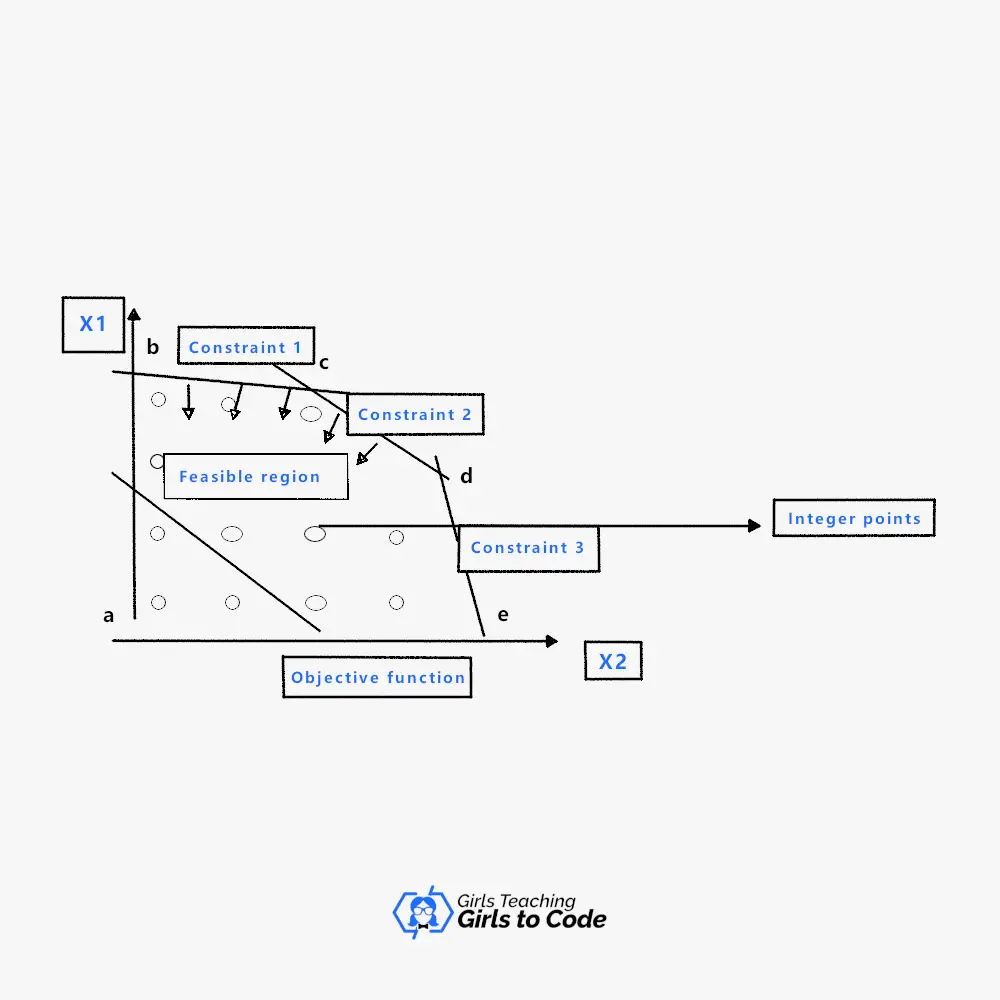When there are many solutions to the given issue, or when the objective function resembles a nonredundant critical constraint, this is known as an alternate optimum solution or alternative optimal solution in the context of linear programming problems (LPP).
Of course, there is more to that, so if you want to find more details and see some examples, you must keep reading!
In this article, we will talk about what an alternate optimal solution is, how you can determine it, and how to find it in Excel. Apart from that, we will answer the question “what is an alternative optimal solution to the transportation problem?” that has been asked many times!
Advertising links are marked with *. We receive a small commission on sales, nothing changes for you.
What is an Alternative Optimal Solution in Linear Programming?
When there are many optimum solutions to a linear or integer programming problem, these additional solutions are referred to as alternate optimal solutions or alternate optima.
An ideal solution to a problem is typically one that meets the problem’s restrictions and the objective function, which is usually to maximize or minimize.

In this case, a problem’s graphical analysis is provided with a set of (=) constraints and a maximizing objective function.
The most miniature set inside the feasible zone is the optimal solution set.
The objective function in this instance is a cd line segment.
Thus, all spots (x1, x2) on the CD have the highest yield.
There is an ideal alternative option in this situation.
How to Find Alternative Optimal Solution in Linear Programming?
First of all, not all linear programs have the best possible solution.
There may be no solution since the viable region is either empty or endlessly huge.
There must always be an optimum solution at a polyhedron vertex, even if it is not necessarily unique.
You may ask how you can tell if a problem has a unique linear programming solution, and the answer is straightforward.
A crossing of constraints, in this case, one of the 5 sections of the feasible polygon, is where an exclusive optimum solution is discovered.
A polytope, or polygon in higher-dimensional space, is what the linear equality constraints’ definition of the viable set calls for.
Also, a good question would be, can a linear program have many different optimum solutions?
The answer would be that while an LP model may have one or more optimum solutions, it cannot have precisely two optimal solutions.
An acceptable solution where the goal function reaches its highest (or minimum) value, such as the most profit or the lowest cost, is considered an optimum solution.
The best-case scenario is that it will discover the overall best answer, but this is not always feasible.
How To Determine If an LPP Has Alternative Optimal Solution?
Here is how to find out if there is an alternate optimal solution when applying the simplex method.
Check your objective row to determine whether there is a zero after using the Simplex approach.
A zero indicates the existence of an alternative optimum option.
Do one more iteration, using your goal row’s zero-column as your pivot column, to discover it.
How Do You Find an Alternative Optimal Solution In Excel?
Let’s first define what we’ll need for Excel calculations.
And, by the way, for this type of calculation, you will be using the Solver tool in Excel.
A solution (set of values for the decision variables) is said to be viable if it satisfies all of the Solver model’s restrictions.
In some instances, a workable answer is already known; in others, the challenge may lie in coming up with a workable solution.
An acceptable solution where the goal function reaches its highest (or minimum) value, such as the most revenue or the lowest cost, is considered an optimum solution.
The solution is said to be globally optimum when there are no alternative practical solutions with superior objective function values.
One can think of a locally optimal solution as a point at the top of a “peak” or at the bottom of a “valley,” which may be established by the objective function and the constraints.
A locally optimal solution is one in which there are no other feasible solutions “in the vicinity” with better objective function values.
Excel: Solver Tool for Finding Solutions
The goal of the Solver is to identify workable and ideal solutions.
The best-case scenario is that it will discover the overall best answer, but this is not always feasible.
Sometimes, it will end with the best solution it has so far identified after finding a locally optimum solution or after a given length of time.
But like many users, you can determine a good solution that is superior to the solution or combination of options. You are now using what’s most crucial.
Depending on the nature of the math relationship among the variables, objective function, and restrictions, many solutions can be discovered via SolverSolver (and the solution algorithm used).
If your model is:
- A) even (smooth) and convex, you can anticipate finding a globally optimal solution.
- B) even (smooth) but non-convex, you will typically be able to locate a locally optimal solution.
- C) non-smooth, you might have to settle for a “good” solution that may or may not be optimal.
What Is an Alternative Optimal Solution in Transportation Problem?
If there is a positive value of the opportunity cost associated with an unused transport route, an alternative optimal solution to the problem of minimizing transport appears.
It is important to note that at least one opportunity cost must equal zero.
There you go, you got to the end. Hopefully, now the alternative optimal solution in LPP is more clear!
Advertising links are marked with *. We receive a small commission on sales, nothing changes for you.
